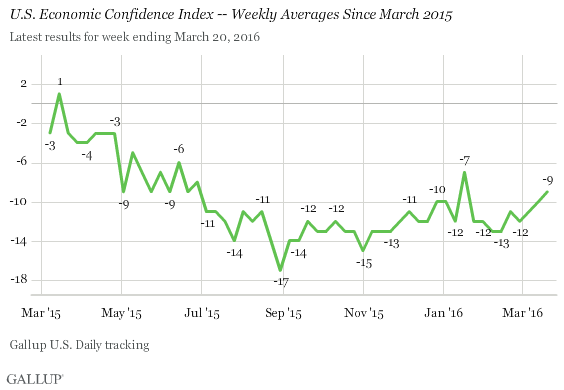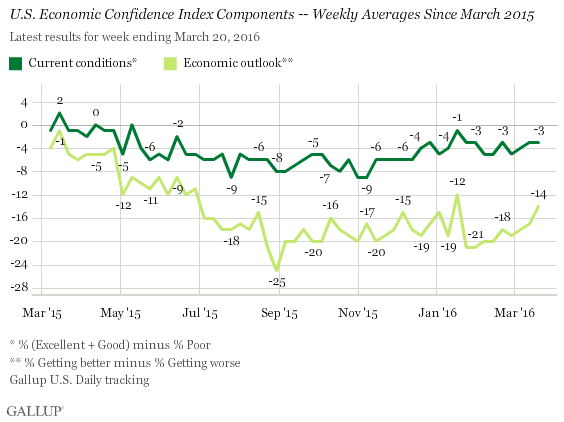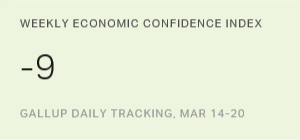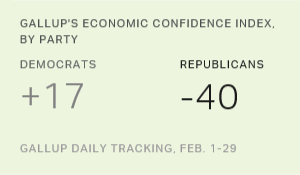Story Highlights
- Weekly confidence up slightly from this year's low of -13
- Economic Confidence Index up from late summer 2015 lows
WASHINGTON, D.C. -- Gallup's U.S. Economic Confidence Index averaged -9 for the week ending March 20. This is up slightly from this year's low of -13 in February and up significantly from a weekly reading of -17 in late August 2015.

In mid-March 2015, economic confidence was slightly positive, with an index score of +1 -- one of only a few positive weekly averages since Gallup began tracking economic confidence daily in early 2008. The index fell through the summer of 2015, bottoming out at -17 at the end of August. The index rebounded to -12 a few weeks later and has since remained fairly stable. The major exception came in mid-January when the weekly index briefly rose to -7 -- an apparent response to President Barack Obama's final State of the Union address.
Gallup's Economic Confidence Index is the average of two components: how Americans rate current economic conditions and whether they feel the economy is improving or getting worse. The index has a theoretical maximum of +100 if all Americans say the economy is doing well and improving, and a theoretical minimum of -100 if all Americans say the economy is doing poorly and getting worse.
For the week ending March 20, the current conditions score of -3 remained consistent with scores in prior weeks. This resulted from 26% of Americans rating the current economy as "excellent" or "good," and 29% rating it as "poor." The economic outlook score was -14, resulting from 41% of U.S. adults saying the economy is "getting better" and 55% saying it is "getting worse." The -14 score represents an improvement from the -21 outlook scores in mid- to late January.

Since early March 2015, the current conditions score has consistently been higher than the economic outlook score. Since last summer, the outlook score has also varied more from week to week compared with the current conditions score.
These data are available in Gallup Analytics.
Survey Methods
Results for this Gallup poll are based on telephone interviews conducted March 14-20, 2016, on the Gallup U.S. Daily survey, with a random sample of 3,537 adults, aged 18 and older, living in all 50 U.S. states and the District of Columbia. For results based on the total sample of national adults, the margin of sampling error is ±2 percentage points at the 95% confidence level. All reported margins of sampling error include computed design effects for weighting.
Each sample of national adults includes a minimum quota of 60% cellphone respondents and 40% landline respondents, with additional minimum quotas by time zone within region. Landline and cellular telephone numbers are selected using random-digit-dial methods.
Learn more about how Gallup Daily tracking works.



